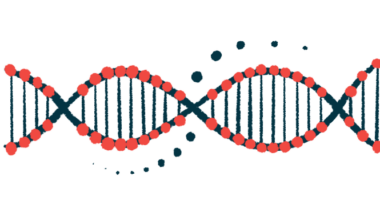Testosterone in gender-affirming care doesn’t raise cancer risk
Study finds treatment poses no added risk of gynecological cancers

The use of testosterone as part of gender-affirming care does not increase the risk of gynecological cancers in transgender men or gender-diverse people, a study found.
Researchers did not find any cases of gynecological cancer among the nearly 2,000 transgender men and gender-diverse people studied, most of whom were fairly young.
“We found no increased risk of these cancers compared to women from the general population,” Asra Vestering, MD, study co-author and a researcher at Amsterdam University Medical Center, said in a university press release. “None of these cancers were diagnosed in the entire participant group. This is valuable information for both healthcare providers and transmasculine and gender-diverse people who are considering starting hormone therapy.”
The study, “Incidence of gynaecological (pre-)malignancies and endometrial activity in transmasculine and gender diverse individuals using testosterone: a retrospective, single-centre cohort study,” was published in eClinicalMedicine.
Transgender men are people who were assigned female at birth but identify as men. For transgender men and people with other gender-diverse identities who were assigned female at birth, testosterone therapy can be an important part of gender-affirming care. Testosterone can induce changes such as facial hair growth and mood alternations that can help bring a person’s body more in line with how they want to express their gender identity.
Research lacking despite increased acceptance of gender diversity
Although there has been increased recognition and acceptance of transgender and gender-diverse people in recent years, data on health outcomes for gender-diverse people who use testosterone therapy is fairly scant. In this study, researchers wanted to see if the risk of gynecological cancers — including cancers of the uterus, ovaries, vagina and vulva — is affected in people using testosterone therapy.
“The aim of this retrospective cohort study was to study the effect of testosterone on the reproductive organs in [transmasculine and gender diverse] individuals and to compare the incidence of gynaecologic (pre)-malignancies with the general population assigned female at birth,” the researchers wrote.
The study looked at 1,955 transmasculine and gender-diverse people in the Netherlands who used testosterone. About one-fifth of these patients had been on puberty-blocking medicines prior to starting testosterone. The median age at starting gender-affirming hormone therapy was 21, and the median duration of testosterone use was slightly longer than five years.
The researchers did not identify any cases of gynecological cancer. A handful of the patients had abnormal growths that can sometimes be precancerous, but these weren’t any more common than is typical for people assigned female at birth who aren’t taking testosterone.
“We conclude that at a young age and with several years of testosterone use, the risk of gynaecological malignancies in [transmasculine and gender diverse] individuals does not appear to be increased compared to the general population assigned female at birth,” the researchers wrote.
In some patients, the researchers were able to analyze samples from the ovaries and/or the endometrium (the lining of the uterus, part of which is shed during menstrual periods). More than 500 of each type of tissue was analyzed. In 32% of endometrial samples, the endometrium showed signs of being active, and in 41% of ovarian samples showed recent signs of ovulation or ovarian activity.
If the ovaries and endometrium are both active, it is feasible that an individual could become pregnant. So these data suggest that while most people taking testosterone are unlikely to become pregnant, taking testosterone doesn’t mean that a person can’t get pregnant.
“This is not only relevant for long-term health, but also means that despite testosterone use, there is still a chance of pregnancy,” said study co-author Wouter van Vugt, a co-researcher at Amsterdam UMC. “That is why good gynaecological care and contraceptive care remains essential for this group, even after the start of hormone therapy.”
The researchers noted that most of the patients in the study were young, and they weren’t followed for a long period of time. Since most gynecological cancers develop later in life, further studies tracking longer-term outcomes are needed to fully understand the safety profile of testosterone therapy as part of gender-affirming care, they said.
Future research should look at cancer risk and screening in transmasculine and gender diverse people who keep their reproductive organs over time, the researchers said. These studies should also consider things like family history of cancer and HPV status, the main cause of cervical cancer, to better understand long-term health risks, they said.
Still, “this research provides important knowledge for better information and guidance of transmasculine and gender-diverse people,” Vestering said.







